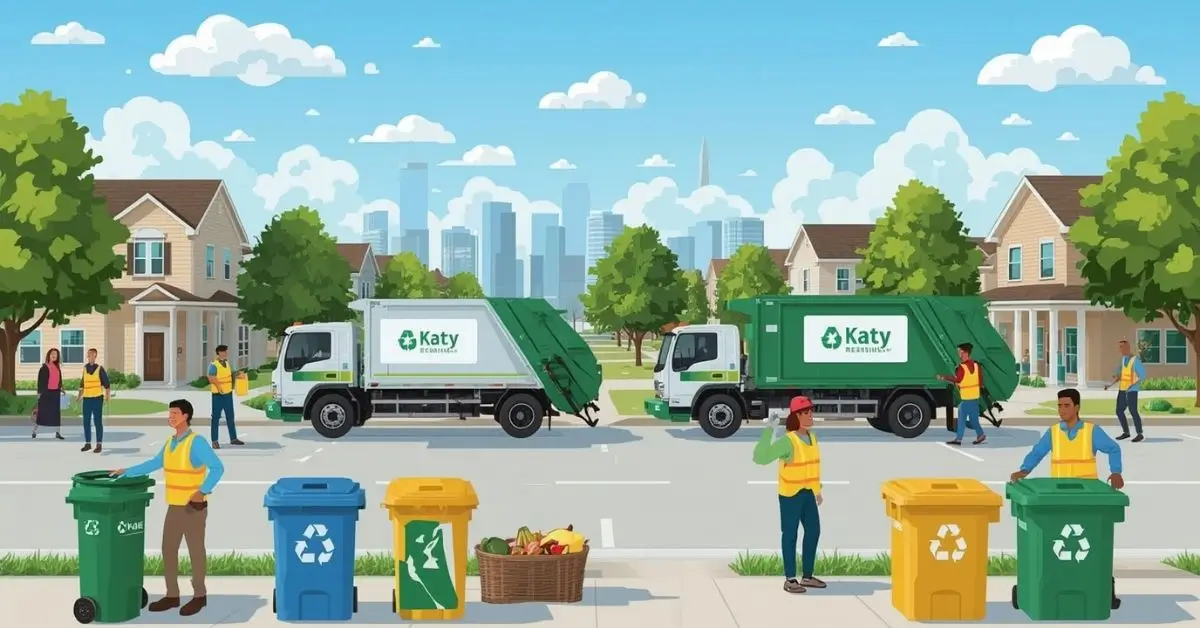WORLD
Yield Lines: The Subtle Signals Guiding Safer Roads

Yield Lines: The Subtle Signals Guiding Safer Roads
In the intricate ecosystem of road traffic management, yield lines play a surprisingly influential role. Though they may appear simple—just a series of white, inverted triangles painted across the pavement—these markings serve as critical communication tools between the road and its users.
Understanding the Purpose of Yield Lines
To the untrained eye, yield lines might look like just another road marking. But to traffic engineers and experienced drivers, they represent a fundamental mechanism of right-of-way management. Unlike stop lines, which demand a full halt, yield lines indicate that drivers must slow down and give precedence to other vehicles or pedestrians—but only if there is conflicting traffic.

The design, typically a row of white isosceles triangles, is not accidental. According to the Manual on Uniform Traffic Control Devices (MUTCD), these markings are standardized for visual consistency across states. Their positioning on the pavement surface cues drivers to yield when entering a roundabout, approaching an unsignalized intersection, or encountering a pedestrian crosswalk.
A Crucial Element of Traffic Engineering
In the field of traffic engineering, every line, symbol, and sign is intentional. Yield lines are no exception. They’re not only a tool to improve roadway safety, but also a key component of traffic calming strategies. Unlike stop signs or speed bumps that force drivers to react abruptly, yield lines offer a more intuitive, behavior-based cue.
The Federal Highway Administration (FHWA) has promoted the use of yield lines in areas where visual prompts are more effective than physical constraints. This is particularly useful at high-speed ramps, urban side streets, and multi-lane intersections, where overuse of stop controls can cause congestion or noncompliance.
When paired with a yield sign, these pavement markings reinforce a clear message: be prepared to pause, but don’t necessarily stop unless necessary. The subtlety of this instruction encourages smoother traffic flow and reduces driver frustration, particularly during peak hours.

Where You’ll Commonly See Yield Lines
Yield lines are typically found in scenarios where multiple streams of traffic converge and priority must be established without halting the entire flow. Some of the most common placements include:
- Roundabout entries, where vehicles entering must yield to those already circulating
- Merging lanes on highways or freeways
- Driveway exits connecting to main roads
- Crosswalks, particularly those near schools or transit stops
- Shared-use paths, where cyclists and pedestrians may interact with vehicles
In each case, the yield line provides a visual cue for caution, serving both to guide unfamiliar drivers and remind locals of the right-of-way rules.
Yield Lines and Pedestrian Safety
A growing focus in urban planning is the safety of non-motorized road users—especially pedestrians and cyclists. Yield lines contribute to this goal by delineating safe stopping points near crosswalks. When used with advanced stop lines, they prevent vehicles from encroaching on pedestrian paths, improving both visibility and safety.
In cities implementing Vision Zero strategies—aimed at eliminating traffic fatalities—yield lines are often part of broader complete streets policies, which design roads for all users, not just cars. By visually separating spaces and responsibilities, yield lines can help mitigate the risks of pedestrian-vehicle collisions in densely populated areas.
Compliance and Legal Enforceability
While not as legally commanding as a stop sign, yield lines are still enforceable under most state traffic laws. A driver who fails to yield at a designated triangle marking can be cited for failure to yield, especially if the infraction leads to an accident.
However, challenges persist with public understanding and compliance. Many drivers are unaware of the distinction between stop lines and yield markings, which can lead to misinterpretation of right-of-way. This is why education campaigns, driver’s license manuals, and even driver-assistance systems in modern vehicles now emphasize the importance of understanding road surface symbols.
Integration with Smart Transportation Systems
With the emergence of autonomous vehicles and intelligent traffic systems, yield lines are being reimagined for machine readability as well. Computer vision technologies use high-contrast markings, such as yield triangles, to interpret road hierarchy and decision points.
In fact, traffic engineers are exploring the role of yield lines in vehicle-to-infrastructure (V2I) communication. These markings, when paired with embedded sensors or smart signage, can dynamically adjust traffic patterns, especially in adaptive traffic control environments.
Global Usage and Differences
Though standardized in the United States under MUTCD guidelines, yield line markings vary globally. In European countries, they are often referred to as “give-way lines”, and while the shape and angle may differ slightly, their purpose remains the same. In Japan, yield lines can be found with accompanying kanji characters painted on the road. Despite these variations, the concept of visual yield cues is internationally recognized as a cornerstone of safe road design.
Educating the Public on Yield Lines
Public awareness is key to the effectiveness of yield lines. Unfortunately, many drivers pass over these triangles daily without understanding their meaning. Department of Transportation agencies across the U.S. have launched awareness campaigns to clarify these and other pavement marking standards, using media, social networks, and driving test updates to promote responsible behavior.
FAQs About Yield Lines on Roads
Q1: What do yield lines on the road mean?
Yield lines are pavement markings indicating where drivers must yield to other road users—usually in conjunction with a yield sign or crosswalk.
Q2: How do yield lines differ from stop lines?
While stop lines require a complete stop, yield lines indicate that you should slow down and proceed only if the way is clear.
Q3: Are yield lines legally enforceable?
Yes. Failure to yield at a marked point can result in traffic violations or legal responsibility in an accident.
Q4: Where are yield lines most commonly placed?
They are frequently seen at roundabouts, merge zones, and pedestrian crosswalks.
Q5: Are yield lines always accompanied by a yield sign?
Not always. In some cases, especially near pedestrian zones, the line alone serves as a visual cue for drivers to yield.
Q6: Do yield lines apply to cyclists and pedestrians?
Generally, yield lines are directed at vehicular traffic, but they can also be used in shared zones to manage pedestrian or cyclist priority.
Conclusion: Yielding to a Smarter Future
In the silent dialogue between roadways and road users, yield lines speak volumes. These unassuming triangle patterns form part of a broader system that values communication, courtesy, and caution.
WORLD
Discover the Best Trash Katy Services Near You

Finding the best trash Katy services can feel overwhelming. With so many options for residential, commercial, and bulk trash removal, it’s easy to get lost in the mix. From scheduling pickup to understanding pricing and eco-friendly practices, knowing where to start is key. This guide will walk you through everything you need to know, so your trash problems are a thing of the past.
Katy Trash Pickup Services: Reliable Solutions for Every Home
Whether you’re a homeowner, renter, or property manager, Katy trash pickup services make life easier. Many local providers offer flexible schedules, same-day pickup, and specialized services like recycling and bulk garbage collection.
“I switched to a local trash pickup service in Katy last year, and the convenience of automated scheduling saved me hours every month,” shared a Katy resident on a local community forum.
Key features to look for in trash pickup services include:
- On-demand pickup options
- Subscription plans for weekly or bi-weekly service
- Support for hazardous or bulky items
- Transparent pricing with no hidden fees
Residential Trash Removal Katy: Keeping Homes Clean and Safe
Residential trash removal Katy services go beyond curbside pickup. From single-family homes to multi-unit apartments, these services ensure that waste is properly collected, sorted, and recycled whenever possible.
Benefits:
- Reduces clutter and keeps neighborhoods tidy
- Minimizes exposure to pests and odors
- Ensures proper disposal of electronics, yard waste, and recyclables
Many Katy residents have started prioritizing companies that offer eco-conscious disposal methods. A sustainable approach not only helps the environment but can reduce landfill costs for the community.
Junk Removal Services Katy TX: Handling Large and Unwanted Items
When it comes to junk removal services Katy TX, homeowners and businesses need specialized solutions for bulky items such as old furniture, appliances, or construction debris. These services often provide:
- On-site assessments
- Same-day or next-day pickup
- Sorting of items for donation, recycling, or disposal
Example: A local contractor recently praised a Katy junk removal service for efficiently clearing out a full warehouse of old equipment in under 4 hours—a task that would have taken their team days.
Affordable Trash Hauling Katy: Cost-Effective Waste Solutions
Not all trash services are created equal. Affordable trash hauling Katy options help residents and businesses get the job done without breaking the bank. Features to consider:
- Transparent flat rates or per-load pricing
- Discounts for recurring service
- Bulk hauling options for construction or landscaping projects
Pro tip: Always compare multiple providers to ensure you’re getting the best value for your budget.
Bulk Garbage Pickup Katy: Efficient Large-Scale Waste Removal
Bulk garbage pickup Katy is perfect for seasonal cleanouts, moving, or large renovations. Many companies allow you to schedule bulk pickups separately from your regular trash service, ensuring convenience and efficiency.
Katy Waste Management Companies: Professionals You Can Trust
From small local operators to larger corporate waste management firms, Katy waste management companies provide comprehensive solutions. Their services often include:
- Commercial and residential pickup
- Recycling and eco-friendly disposal
- Hazardous and electronic waste management
Choosing a reputable company ensures your waste is handled responsibly and reduces the risk of fines or environmental penalties.
Eco-Friendly Trash Disposal Katy: Sustainable Waste Practices
With increasing concern about environmental impact, eco-friendly trash disposal Katy services are growing in popularity. These services focus on:
- Recycling paper, plastics, metals, and electronics
- Composting yard waste
- Reducing landfill contributions
Sustainability-conscious residents often prefer providers who publish annual reports on recycling efforts, providing transparency and accountability.
Commercial Trash Services Katy: Streamlined Business Waste Management
Businesses require specialized solutions. Commercial trash services Katy help offices, retail stores, and restaurants manage waste efficiently, often with:
- Scheduled pickups during off-hours
- Dumpster rentals for high-volume waste
- On-site waste audits to optimize disposal
Efficient commercial waste management reduces clutter, keeps employees safe, and ensures compliance with local regulations.
Local Trash Collection Katy: Community-Focused Solutions
Supporting local trash collection Katy providers ensures faster response times, personalized service, and stronger community ties. Residents benefit from:
- Direct communication with service teams
- Flexible scheduling options
- Community-based recycling programs
Recycling and Trash Services Katy: Combining Convenience with Sustainability
Many residents prefer providers offering combined recycling and trash services Katy. Benefits include:
- Simplified pickup schedules
- Reduced environmental impact
- Cost efficiency through bundled services
How to Choose the Best Trash Katy
Choosing the right trash service can be simple if you focus on these factors:
- Reliability: Check reviews and ratings to ensure consistent service.
- Pricing Transparency: Avoid hidden fees and unclear contracts.
- Eco-Friendly Options: Look for recycling and composting programs.
- Flexibility: Confirm that the service can handle special requests like bulk pickup or electronics.
- Customer Support: A responsive support team is crucial for smooth operations.
FAQ Section
Q1: What is the best trash pickup service in Katy TX?
A: The best service depends on your needs—residential, commercial, or bulk. Look for reliability, transparent pricing, and eco-friendly options.
Q2: How much does junk removal in Katy cost?
A: Prices vary by provider, item size, and disposal complexity. On average, expect $100–$400 for a standard junk load.
Q3: Are there eco-friendly trash disposal options in Katy?
A: Yes. Many local services offer recycling, composting, and electronic waste disposal to minimize environmental impact.
Q4: Can I schedule bulk garbage pickup in Katy?
A: Absolutely. Most providers allow scheduled bulk pickups separate from regular trash collection.
Conclusion
Finding the best trash Katy service doesn’t have to be complicated. From residential trash removal Katy to bulk garbage pickup Katy, and eco-friendly disposal options, the city offers numerous reliable providers. Whether you prioritize affordability, sustainability, or convenience, this guide equips you to make an informed decision.
WORLD
Taylor Swift: A Journey of Reinvention, Ownership, and Cultural Influence

Few artists have reshaped modern music and pop culture the way Taylor Swift has. From her teenage country beginnings in Nashville to her current position as one of the most influential entertainers on the planet, her career has been a masterclass in artistry, business acumen, and storytelling. Her rise to fame is not only about chart-topping hits but also about resilience, reinvention, and taking control of her creative and financial future.

Early Beginnings: The Nashville Dream
Born in Pennsylvania, Swift moved to Nashville at a young age, determined to break into the country music industry. Signing with Big Machine Records, she released her self-titled debut album that blended heartfelt songwriting with traditional country melodies. Tracks like “Tim McGraw” and “Teardrops on My Guitar” instantly made her a household name, proving that she was more than a passing teen sensation.
Her follow-up album Fearless solidified her reputation. Songs like “Love Story” and “You Belong With Me” bridged country and pop, earning her critical acclaim, multiple awards, and her first Grammy for Album of the Year. These early records showcased her gift for autobiographical storytelling, a skill that would continue to define her career.
Crossing Over: Pop Stardom and Global Recognition
By the time Red and 1989 were released, Swift had fully transitioned into mainstream pop. The 1989 era, filled with hits like “Shake It Off” and “Blank Space,” propelled her to global superstardom. Collaborating with producers like Max Martin and Shellback, she mastered the formula for pop anthems while retaining her lyrical depth.
1989 earned her another Album of the Year Grammy, cementing her as a genre-defying artist who could dominate both country and pop markets. During this period, she also leaned into elaborate music videos, bold fashion reinventions, and highly publicized collaborations that expanded her influence beyond music.
Reputation, Reinvention, and Image Control
When Reputation arrived, Swift took a darker turn. The album explored themes of media scrutiny, betrayal, and reinvention. Songs like “Look What You Made Me Do” introduced an edgier persona, signaling her ability to adapt and respond to cultural narratives surrounding her. Despite initial criticism, Reputation sold millions worldwide and demonstrated her resilience in an industry that often thrives on tearing artists down.

Folklore, Evermore, and the Return of Storytelling
The 2020 pandemic brought another reinvention. Working closely with Jack Antonoff and Aaron Dessner, she released Folklore and Evermore, two sister albums that showcased indie-folk and alternative sounds. These records shifted focus from autobiographical tales to fictional storytelling, exploring characters, narratives, and emotional landscapes.
Songs like “Cardigan” and “August” received critical praise for their lyrical complexity. Folklore went on to win the Grammy for Album of the Year, proving that even in unexpected genres, she could dominate both charts and awards.
Masters, Ownership, and Taylor’s Version
One of the defining chapters in her career has been her battle for ownership of her music. After Scooter Braun’s acquisition of Big Machine Records, Swift’s masters for her first six albums changed hands without her consent. In response, she began re-recording her catalog as Taylor’s Version.
This unprecedented move not only gave her financial control but also inspired a larger conversation about artists’ rights in the music industry. Albums like Fearless (Taylor’s Version) and Red (Taylor’s Version) have been embraced by fans, often outperforming the originals. By reclaiming her work, she redefined what it means to be an empowered artist in the modern era.
The Eras Tour and Cultural Impact
Swift’s Eras Tour became a global phenomenon. More than just a concert, it served as a retrospective journey through every stage of her career, from her country roots to her latest albums like Midnights and The Tortured Poets Department. The tour shattered records for ticket sales, streaming boosts, and cultural engagement.
Swifties, her dedicated fanbase, became an integral part of this experience. From trading friendship bracelets to creating viral social media moments, the fan culture surrounding Swift elevated her tour into a global cultural event.
Recent Releases: Midnights and The Life of a Showgirl
Her 2022 album Midnights blended synth-pop with introspective storytelling, delivering hits like “Anti-Hero” that resonated with both critics and audiences. The album quickly became one of her most commercially successful projects.
Looking ahead, The Life of a Showgirl has generated immense anticipation. With its glamorous aesthetic and theatrical undertones, the record signals yet another artistic reinvention. Fans expect it to blend bold visuals with intricate songwriting, showcasing Swift’s never-ending ability to surprise.

Awards, Records, and Influence
Over her career, Swift has broken countless records. She is one of the best-selling artists of all time, has earned multiple Grammy Awards, and continues to dominate streaming platforms. Her ability to consistently deliver chart-topping albums across genres is unmatched.
Beyond the numbers, her influence extends to cultural conversations about gender, ownership, and the role of music in shaping identity. By combining artistry with activism, she has become more than an entertainer—she is a cultural force.
FAQs
How many albums has Taylor Swift released?
She has released 11 studio albums, including re-recordings of earlier works labeled Taylor’s Version, with more on the way.
Why did she re-record her albums?
Swift re-recorded to reclaim ownership of her masters after they were sold to Scooter Braun’s company without her approval.
What is The Eras Tour?
The Eras Tour is a global concert series that takes fans through every stage of her career, celebrating her diverse discography.
What is her latest album?
Her most recent album is The Life of a Showgirl, which blends theatrical themes with her signature lyrical storytelling.
How many Grammys has she won?
Swift has won more than a dozen Grammy Awards, including multiple Album of the Year honors.
What is the Swifties fan culture?
Swifties are her devoted fans, known for their creativity, loyalty, and global community that drives much of her cultural impact.
Conclusion
Taylor Swift’s journey is more than a story of hit records—it is one of resilience, reinvention, and empowerment. From her Nashville beginnings to her bold moves in reclaiming her catalog, she has consistently shaped not just music but the business and culture around it. Her artistry continues to evolve, her fanbase only grows stronger, and her legacy as one of the most influential artists of her generation is firmly secured
WORLD
Is Crypto a Scam? Exploring Truth, Risks, and Reality

Cryptocurrency has become one of the most debated topics in modern finance. With headlines about sudden millionaires, blockchain innovation, and government regulations, many people still ask a pressing question: is crypto a scam or a legitimate investment opportunity? While there are undeniable cases of fraud and manipulation in the crypto space, it’s important to understand the difference between the technology itself and the scams that operate around it.
Understanding the Foundation of Cryptocurrency
At its core, cryptocurrency is built on blockchain technology—a decentralized, transparent ledger that records transactions across a distributed network of computers. Unlike traditional currencies controlled by central banks, digital assets such as Bitcoin and Ethereum rely on cryptographic verification. This transparency allows anyone to track activity on public blockchains, making it difficult to forge records.

The legitimacy of cryptocurrency as a technology is undeniable. Bitcoin, for example, has been recognized globally as a digital asset and even adopted by some countries and major corporations. Ethereum powers decentralized finance (DeFi) platforms, smart contracts, and non-fungible tokens (NFTs). These innovations show that crypto is far more than a passing trend or fraudulent scheme.
Why Do People Think Crypto Is a Scam?
Despite its strong technological foundation, crypto has developed a reputation for fraud. This skepticism often comes from real cases of scams that exploit uninformed investors. Several factors contribute to the perception:
- High Volatility: Prices can swing dramatically, leading to major gains but also devastating losses.
- Lack of Regulation: Unlike banks or stock markets, crypto trading operates with limited oversight, creating opportunities for bad actors.
- Scam Projects: Fake tokens, rug pulls, and pump-and-dump schemes mislead investors with promises of unrealistic returns.
- Celebrity Endorsements: Influencers and public figures have promoted fraudulent tokens, fueling distrust.
These issues don’t mean cryptocurrency itself is fraudulent, but they highlight the risks of unregulated and speculative markets.
Common Crypto Scams Investors Should Know
To determine if crypto is a scam, one must separate genuine innovation from fraudulent activities. Some of the most common scams include:
1. Rug Pulls and Fake Tokens
Developers create a token, hype it with marketing and social media, then suddenly withdraw all liquidity, leaving investors with worthless assets.
2. Pump and Dump Schemes
Groups artificially inflate a coin’s price through coordinated buying and hype. Once new investors join, organizers sell off their holdings, causing prices to crash.
3. Phishing and Fake Exchanges
Hackers create fake wallets, exchanges, or websites to steal private keys and funds. Victims often believe they are on a legitimate platform.
4. Fraudulent ICOs (Initial Coin Offerings)
New projects raise funds by selling tokens but disappear before delivering a real product. The infamous OneCoin scam is an example of this.
5. Celebrity & Influencer Endorsement Scams
Projects pay celebrities to promote tokens without disclosing risks, tricking people into believing the investment is safe.
How to Tell if a Crypto Project Is Legitimate
Not all crypto projects are scams, but distinguishing between the two requires careful research:
- Check the White Paper: A legitimate project will provide a clear vision, real technology, and a roadmap.
- Research the Team: Anonymous developers can be a red flag, while transparent, credible founders add trust.
- Look for Smart Contract Audits: Reputable projects undergo third-party audits to ensure code security.
- Evaluate Tokenomics: Understand supply, distribution, and utility. If it only promises huge profits, beware.
- Verify Community Presence: Healthy discussion on forums like Reddit, Twitter, or Discord can signal authenticity.
Regulation and Legal Protections
Global regulators are increasingly stepping in to reduce scams and protect investors. The SEC in the United States, FCA in the UK, and other bodies around the world are creating frameworks for digital assets. Compliance measures such as KYC (Know Your Customer) and AML (Anti-Money Laundering) are now required by most major exchanges like Coinbase, Binance, and Kraken.
While regulation adds legitimacy, it cannot completely eliminate scams. Investors must remain cautious and proactive in safeguarding their funds.

Security Best Practices for Crypto Investors
Even in a world with increasing regulation, individual security is critical. Here are ways to protect yourself from scams:
- Use Hardware Wallets: Devices like Ledger and Trezor store private keys offline.
- Enable Two-Factor Authentication: Protects exchange accounts from unauthorized access.
- Avoid Unrealistic Promises: Any project guaranteeing returns is likely fraudulent.
- Double-Check URLs and Apps: Fake apps and websites are common tools for hackers.
- Stay Updated: Following blockchain news, community forums, and official exchange announcements helps identify risks early.
The Future of Cryptocurrency: Scam or Evolution?
While scams are an unfortunate reality, they exist in nearly every financial market—from penny stocks to real estate. What makes crypto unique is its blend of innovation and risk. Projects like Ethereum, Polkadot, and Solana are driving decentralized applications, financial inclusion, and cross-border payments.
The rise of stablecoins and central bank digital currencies (CBDCs) also shows how mainstream digital currency is becoming. Rather than dismissing crypto as a scam, it’s more accurate to say the market contains both fraudulent actors and groundbreaking technology.
FAQs
Is cryptocurrency a scam or real investment?
Cryptocurrency itself is not a scam. It is a legitimate technology powered by blockchain. However, scams within the industry exploit uninformed investors.
How can I tell if a crypto project is safe?
Check for transparency, team credibility, smart contract audits, and realistic goals. Avoid projects with anonymous developers or guaranteed profits.
What are the most common crypto scams?
Rug pulls, fake ICOs, phishing, pump-and-dump schemes, and fraudulent exchanges are the most common.
Can you lose all your money in crypto?
Yes, due to volatility or scams. Only invest what you can afford to lose and always research before investing.
What role does regulation play in preventing scams?
Regulation by organizations like the SEC and FCA provides investor protections, but it cannot fully eliminate risks in a decentralized system.
Are celebrity-endorsed crypto projects trustworthy?
Not necessarily. Many influencers have promoted fraudulent tokens. Always verify the legitimacy of the project before investing.
Conclusion
So, is crypto a scam? The short answer is no—cryptocurrency as a technology is legitimate and innovative. The blockchain offers transparency, decentralization, and powerful use cases. However, the industry has attracted scams, fake tokens, and fraudulent schemes due to its unregulated nature.
The best approach is to separate the innovation from the manipulation. By understanding red flags, researching projects, and practicing strong security measures, investors can participate in this evolving digital economy while minimizing risks. Crypto is not a scam—it is a financial revolution that requires knowledge, caution, and responsibility.

 SCIENCE4 months ago
SCIENCE4 months agoThe Baby Alien Fan Bus Chronicles

 BUSINESS4 months ago
BUSINESS4 months agoMastering the Art of Navigating Business Challenges and Risks

 WORLD4 months ago
WORLD4 months agoRainwalkers: The Secret Life of Worms in the Wet

 WORLD4 months ago
WORLD4 months agoRainborne Royals: The Rise of Winged Termites

 WORLD4 months ago
WORLD4 months agoFox News Returns to Dish: Broadcast Battle Resolved

 BUSINESS4 months ago
BUSINESS4 months agoNewport News Shipbuilding Furloughs Hit Salaried Workers

 EDUCATION4 months ago
EDUCATION4 months agoFresh Bites: Foodstuffs Update

 FOOD4 months ago
FOOD4 months agoDining with the Sandhill Crane: Nature’s Graceful Forager
















